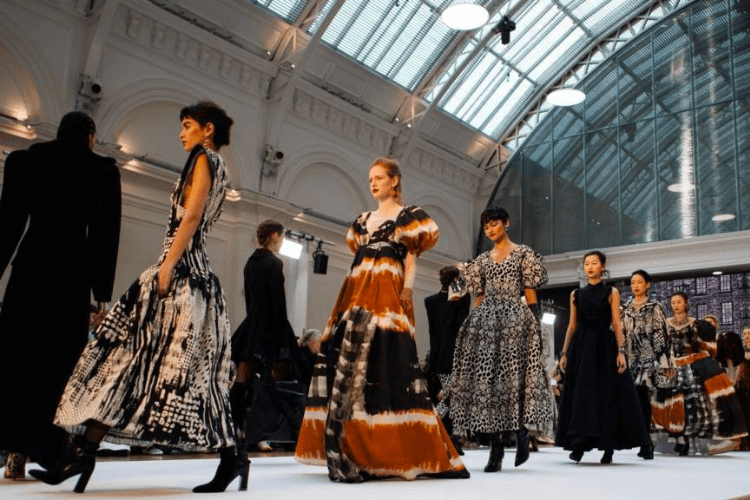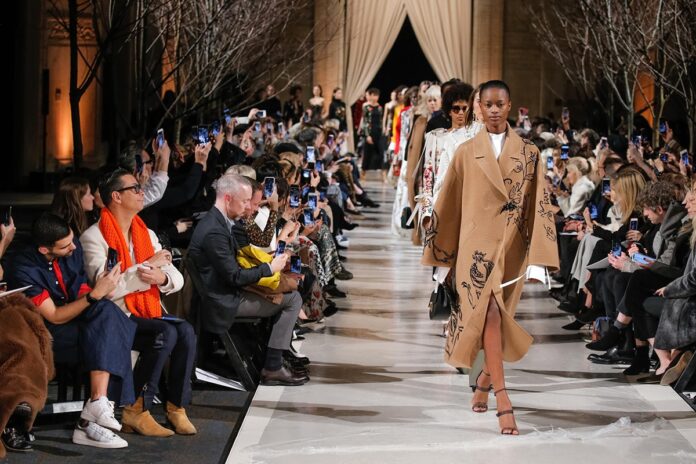London Fashion Week (LFW) is back, celebrating its 40th year of showcasing the latest trends on the runway. With over 250 designers, it remains a major event in the fashion world. But as LFW turns 40, the question on everyone’s mind is whether it can stay relevant in a fast-changing industry.
The Origins of London Fashion Week
London Fashion Week began in 1984 as the brainchild of PR specialist Lynne Franks. She saw the potential in London’s fashion scene and wanted to give young designers and models a platform to shine. Franks discovered the perfect venue in Holland Park, outside the Commonwealth Institute, which is now known as the Design Museum. A large tent was pitched, marking the start of London Fashion Week. This was inspired by fashion shows in Paris and Milan, where tents were often used.
Readind Suggestions British Music Icon Rocks Manchester Estate Social Club: A Memorable Night Turns Surprising
One of her clients helped fund the first three seasons of LFW, but the tent setup soon became impractical. According to an interview Franks gave to Vogue, the tent started sinking into the lawn. So, LFW had to move to a new location.
From Tents to Big Venues
In 1986, LFW moved to Duke of York’s Barracks in Sloane Square, now known as Saatchi Gallery. The larger venue allowed for more creativity and space, but it also came with the need for more funding. Franks secured additional funding from her clients, making the event bigger and better.
Franks shared her excitement with the BBC, saying, “We had a much bigger tent down there, spaces in the complex, press office, double catwalks…it was wonderful.” This new venue attracted even more attention, and soon, LFW became a major attraction, drawing big names like Diana, Princess of Wales, Boy George, and Madonna.
The Rise of British Supermodels
During the late 1980s, London Fashion Week became the launchpad for some of the biggest names in the fashion industry. Supermodels like Naomi Campbell and Kate Moss made their runway debuts at LFW between 1988 and 1989, setting the stage for their global fame. These British stars would go on to dominate the fashion world for years to come.
Adapting to New Challenges
However, by the early 1990s, the fashion industry was hit by a recession, and funding for London Fashion Week took a big hit. Despite the challenges, the British Fashion Council (BFC) stepped in with a new initiative called the NexGen scheme in 1993. This program aimed to mentor and support young designers financially. One of the early beneficiaries of this scheme was none other than the rising star Alexander McQueen.
The recession may have slowed things down for a while, but London Fashion Week continued to grow, always adapting to the needs of the fashion world. US Vogue critic Sarah Mower credited LFW’s success to its focus on young, fresh talent, saying, “London produces young, individualist designers from all over the UK and who belong to multiple cultures. London supports and seeks out emerging talent like no other city.”

London’s Push for Sustainability
Forty years after its debut, London Fashion Week is still all about showcasing what’s new. This includes not just clothing styles but also a focus on sustainability. This year, LFW made a strong statement by opening with pre-loved clothing on the runway. By putting second-hand fashion front and center, LFW showed that the industry is paying attention to environmental concerns.
Partnering with eBay, the British Fashion Council presented a collection of archival pieces from previous fashion weeks. After the show, these pieces were made available for purchase on eBay’s website. The focus on sustainability is just one of the ways London Fashion Week is trying to stay relevant in an era of changing consumer habits.
Global Recognition and New Competition
As London Fashion Week celebrates 40 years, it faces some stiff competition. While LFW is still one of the Big Four fashion weeks, alongside New York, Milan, and Paris, its global influence is being challenged. More British designers are choosing to showcase their collections in other cities, such as Paris and New York, which have gained more attention in recent years. For instance, Victoria Beckham, once a regular at LFW, moved her show to Paris in 2022 and hasn’t looked back since.
Despite these challenges, London Fashion Week remains a vital event, largely because of its support for young, emerging talent. It continues to draw international attention, although staying at the forefront of the fashion world is becoming increasingly difficult.
Reading suggestion Londoners Encouraged to Celebrate World Car Free Day
Conclusion: London Fashion Week Turns 40: Can It Stay Relevant?
As London Fashion Week marks its 40th anniversary, it’s clear that the event has left a lasting mark on the fashion world. From its humble beginnings in a tent outside the Commonwealth Institute to its current status as a global fashion powerhouse, LFW has seen it all. But with new challenges, including increased competition and a shift towards sustainability, the question remains: can London Fashion Week stay relevant in today’s rapidly changing fashion landscape?
The answer lies in its ability to adapt. By supporting young talent and embracing new trends like sustainability, LFW has shown that it can evolve with the times. London Fashion Week turns 40: can it stay relevant? Only time will tell, but if history is any indication, LFW will continue to be a force in the fashion industry for years to come.

